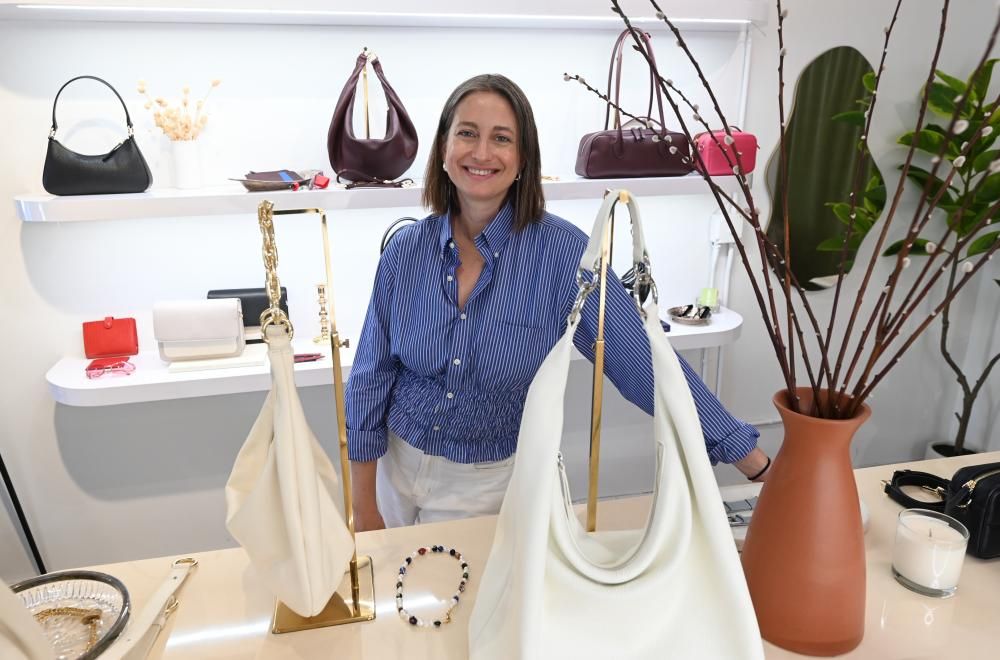
After more than a decade as a fashion designer, Dana Cohen found herself disillusioned by the rampant waste in the industry. From surplus samples to manufacturing scraps, the fashion world seemed to be drowning in excess. “I was like, ‘I just don’t want to be a part of it any more,’” Cohen expressed, reflecting on her experiences with brands such as Banana Republic, Club Monaco, and J Crew.
Her perspective shifted after a chance encounter with Drishti Lifestyle, an Indian manufacturer with a surplus of leather scraps. Together, they experimented with creating wallets and handbags, which quickly sold out. This marked the beginning of Cohen’s sustainable leather accessories company, Hyer Goods, launched in November 2019. The brand focuses on using deadstocks—leftover scraps that would otherwise end up in landfills—to create bags, wallets, and other accessories.
From Waste to Luxury: The Hyer Goods Model
Hyer Goods sources luxury leather leftovers from designer heavyweights like Hermès, Chanel, and Valentino. These materials are retrieved both directly from Italian factories and through intermediaries with connections to these brands. The scraps are then transported to family-run factories in Italy’s Marche region, where they are crafted into high-quality products.
Designer brands typically use only the highest grades of leather, leaving Hyer Goods to utilize “off-cuts” that may have minor blemishes. This reliance on available scraps results in small-batch collections, with each line potentially featuring a mix of different leathers. “We have never made 500 pieces of anything,” Cohen noted, emphasizing the unique nature of each product.
“It’s not for the faint of heart,” Cohen said, estimating that her model has kept approximately 7,000 pounds of leather in circulation over the last six years.
Environmental and Economic Impacts
The fashion industry is notorious for its environmental impact, sending about 92 million tonnes of textiles to landfills annually and contributing significantly to global greenhouse gas emissions. Hyer Goods aims to mitigate this by embracing a circular economy model, as noted by Ann Cantrell, an associate professor at the Fashion Institute of Technology (FIT). Cantrell praised the brand’s “triple bottom line” approach, which balances profitability with social and environmental responsibility.
Leather, while durable, is linked to environmental issues such as deforestation and water use. However, Cantrell pointed out that leather’s longevity makes it a potentially sustainable material. Elizabeth Cline, an expert on fast fashion, added that repurposing genuine leather is preferable to creating faux leather, which often involves plastics and can introduce new environmental problems.
“There’s no perfectly sustainable material,” Cline said, but repurposing leather is a step in the right direction.
Challenges and Adaptations
Launching just before the pandemic, Hyer Goods faced challenges as consumer demand for luxury handbags waned. Cohen adapted by sewing masks from leftover fabrics, engaging her community through social media to crowdsource materials and opinions. This strategy not only connected her with her audience but also informed her business decisions.
The brand’s popularity grew, attracting attention from figures like Katie Couric and Alison Roman. Major retailers, including Bloomingdales and Nordstrom, now carry Hyer Goods products. In 2024, Cohen opened a brick-and-mortar store in New York’s West Village, supported by a grant from ChaShaMa, a non-profit aiding women and minority artists.
However, economic challenges persist. Tariffs imposed by the Trump administration on Italian goods forced Cohen to raise prices, initially causing a dip in sales. Despite these hurdles, Cohen remains committed to maintaining production in Italy, citing the unmatched craftsmanship available there.
Looking Forward: Sustainability and Growth
Cohen envisions expanding Hyer Goods to include belts, shoes, and deadstock Italian cottons, alongside opening a second store. Yet, economic volatility and the nature of a bootstrapped business reliant on fluctuating supplies have delayed these plans. “Any dreams I had, I’ve put on hold,” she admitted, focusing instead on sustainability over growth.
“My goal was never to be a behemoth organization,” Cohen said. “I just want to have a nice, small business for people who care.”
As Hyer Goods continues to navigate the complexities of sustainable fashion, Cohen’s mission remains clear: to challenge the status quo and offer consumers a responsible alternative in the luxury market.







